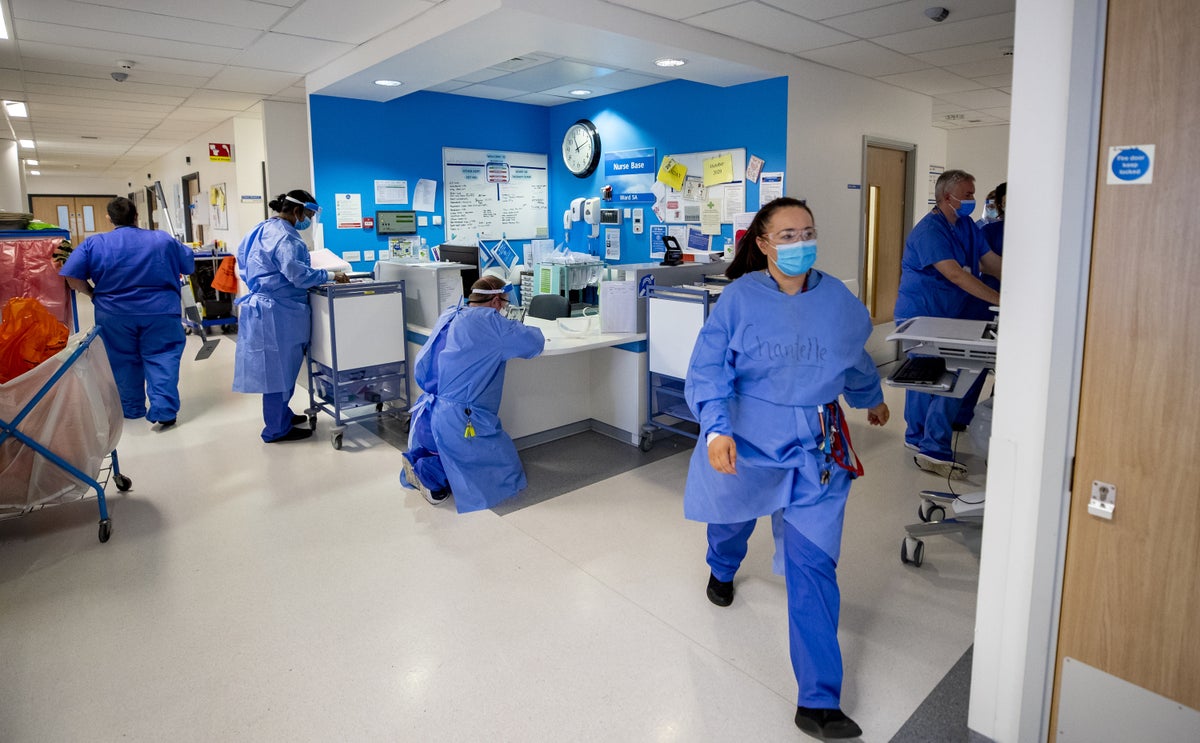
The NHSwaiting list for treatment has hit a new high, as ambulance services and A&E departments experienced their worst summer on record.
A total of 6.8 million people were waiting to start treatment at the end of July, up from 6.7 million in June. This the highest figure recorded since data was first collected in August 2007, when the waiting list stood at 4.2 million. It is up from 2.6 million in May 2010 when the Conservative government was elected.
Figures show that at least 80,107 patients waited 12 hours from a decision to admit in A&E to admission over June, July and August this year. This is up from 6,284 patients over the same period of time in 2021, and again represents the highest number since records began.
Ambulance services also had their busiest ever summer, receiving 237,000 category 1 calls, and had the worst response times ever seen during the summer period.
The news comes as new health secretary Therese Coffey has set out her four key priorities: ambulances, backlogs, care, and doctors and dentists.
Nigel Edwards, chief executive of think tank the Nuffield Trust, has warned that this month’s performance figures show that the new prime minister and Ms Coffey face a “monumental” challenge.
He added: “This crisis has been years in the making. As our analysis published on Monday shows, the pandemic simply served to ramp up pressure on an already beleaguered health service, with staff shortages, a failure to tackle social care, and inadequate investment putting the NHS on the back foot when Covid hit. Even without the pandemic, we would have seen over 5 million people waiting for routine care.”
Of those waiting for NHS treatment following a referral, 377,689 patients had waited more than 52 weeks in July, and 2,885 patients had waited more than 104 weeks, down from 3,861 in June.
The government and NHS England had previously announced a target to eliminate all waits of more than two years, except when it is the patient’s choice or for complex cases requiring specialist treatment, by July this year.
According to NHS England, there were 8,479 patients in hospital with Covid-19 each day this summer. This is compared with 3,313 in summber 2021 and 2,032 in 2020.
Figures show that at least 13,338 beds a day in August were taken up by patients who no longer needed hospital care.
At least 28,800 patients were delayed more than 12 hours from a decision to admit to A&E in August, and 131,000 waited more than four hours.
The data on 12-hour waits from a decision to admit is likely to be around five times lower than the actual number of people who waited more than 12 hours from arriving in A&E. NHS England collects but does not publish the latter measurement.
In August, The Independent revealed that 700,000 patients had waited more than 12 hours from arrival in A&E in the first six months of 2022.
A total of 71.4 per cent of patients in England were seen within four hours in A&E last month, up from 71 per cent in July, but still the second-worst performance on record. The NHS has a target for at least 95 per cent of patients to be admitted, transferred or discharged within four hours, but this has not been met since 2015.
Ambulance data shows that the number of patients getting a response in August was at its lowest level for nearly five years. Figures on ambulance delays showed that in August, category 1 patients waited on average 9 minutes 8 seconds for a response. This is slightly down from 9 minutes 35 seconds in July. Patients needing a category 1 response should be attended by an ambulance within 7 minutes.
For patients in the second most urgent category, ambulance repsonse times hit 42 minutes 44 seconds in August, down from 59 minutes in July.
Meanwhile, NHS England figures show that 238,771 urgent cancer referrals were made by GPs in England in July, the highest number for that month in records going back to 2009. This is up from 229,093 referrals in June, and the fourth highest number of monthly referrals on record.
The proportion of patients in England seeing a specialist within two weeks in July was 77.8 per cent, up very slightly from 77.7 per cent in June.
Professor Sir Stephen Powis, NHS national medical director, said: “This month’s figures show that despite another significant wave of Covid infection this summer, we are making significant progress on reducing backlogs, with waits of more than 18 months down and the lowest number of patients waiting for tests and checks since we published our elective recovery plan.
“We also saw improvements in A&E performance and ambulance response times across all measures this month, despite responding to a record number of the most serious ambulance callouts across summer – up a third on pre-pandemic levels – and continued challenges discharging into the community and social care.”







